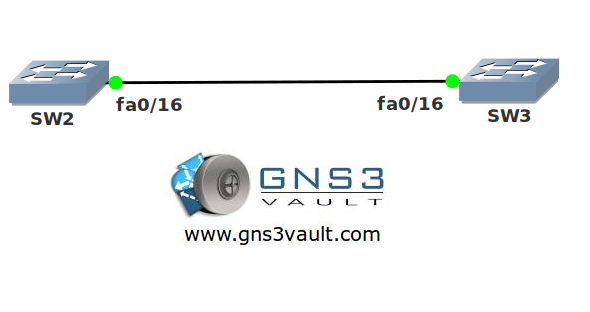Scenario:
For this lab you need REAL hardware. You can’t use switches in GNS3!
You need at least Catalyst 2950 switches for this lab.
Fiber ‘r’ us is specialized in fiber solutions for layer 2 switches. They are concerned that layer 2 loops might occur when the transmit or receive connectors of their fiber links get disconnected. You want to implement a feature that will prevent a loop in case this happens. You don’t want to use a spanning tree solution so there’s something else you’ll have to configure…
Goal:
- Configure UDLD on interface fa0/16 of both switches, use aggressive mode.
- Configure a MAC filter on SW2 that filters MAC address 0100.0ccc.cccc to simulate a link failure.
It took me 1000s of hours reading books and doing labs, making mistakes over and over again until I mastered all the switch protocols for CCNP.
Would you like to be a master of switching too? In a short time without having to read 900 page books or google the answers to your questions and browsing through forums?
I collected all my knowledge and created a single ebook for you that has everything you need to know to become a master of switching.
You will learn all the secrets about UDLD, spanning-tree, loop prevention on switches and more.
Does this sound interesting to you? Take a look here and let me show you how to Master CCNP SWITCH
IOS:
Basic IOS for the switches should be sufficient. No special features needed.
Topology:

Video Solution:
Configuration Files
You need to register to download the GNS3 topology file. (Registration is free!)Once you are logged in you will find the configuration files right here.

The How to Master series helps you to understand complex topics like spanning-tree, VLANs, trunks, OSPF, EIGRP, BGP and more.
Written by René Molenaar - CCIE #41726

